Andaman and Nicobar Islands – Culture and Tradition

Andaman and Nicobar Islands union territory of India lies in the Bay of Bengal. The Andaman Islands form an archipelago in the Bay of Bengal between India to the west and Myanmar to the north and east.
Andaman and Nicobar Islands are mostly covered with dense rainforest. The territory’s capital city is Port Blair while the capital of the Nicobar Islands is Car Nicobar. Most parts of the Andaman and Nicobar Islands belong to the union territory of India, while a small number of the north of the archipelago including the Coco island, belong to Myanmar.
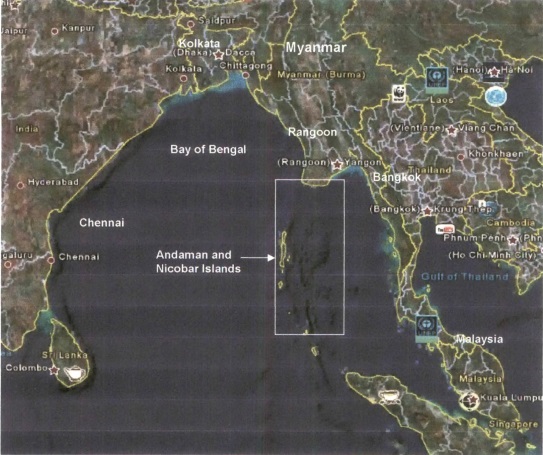
Origin
The Andaman islands have been inhabited for several thousand years, at the very least. The earliest archaeological evidence yet documented goes back some 2,200 years, however, the indications from genetic, cultural, and isolation studies suggest that the islands may have been inhabited as early as the Middle Paleolithic.
There is a mention of these Islands in the accounts of sailors, travelers, and traders from long past like that of Ptolemy in the second century, of Chinese in the seventh century, the Arabs in the ninth century, and the Europeans in the thirteenth century.
The name Andaman may also have originated from Hanuman, the Malayan name also for the famous monkey God. The reference to these Islands is found in most of the ancient literature also. But there is much supportive information revealing that the name Andaman has much Malayan influence.
The Andamans are theorized to be a key stepping stone in a great coastal migration of humans from Africa via the Arabian peninsula, along with the coastal regions of the Indian mainland and towards Southeast Asia, Japan, and Oceania.
From 800 to 1200 CE, the Tamil Chola dynasty created an empire that eventually extended from southeastern peninsular India to parts of Malaysia. Rajendra Chola I (1014 to 1042 CE) took over the Andaman and Nicobar Islands and maintained them as a strategic naval base to launch a naval expedition against the Srivijaya empire (a Buddhist-Malay empire based on the island of Sumatra, Indonesia).
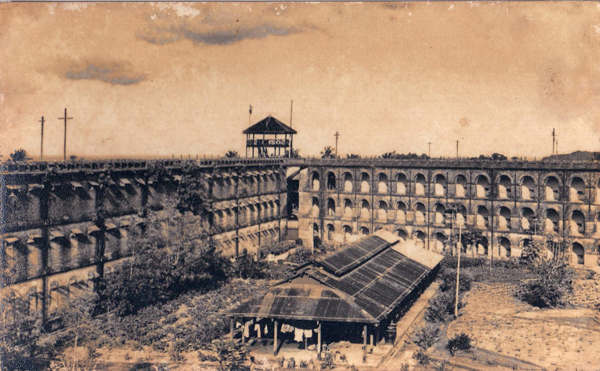
In 1789, the British established their colony on this Island and they maintained this Island they used Island as a penal colony which was named Kalapani or the cellular jail.
The criminal convict’s crime against the East India Company was sent to Andaman and Nicobar Island and Life was sentenced and they were forced to live in exile in Kalapani. The breakthrough in its developmental process was made with the settlement of refugees from Bangladesh and Myanmar.
After the end of British rule, the Kalapani became a beautiful Island. 17 May 1859 was another major day for Andaman. The “Battle of Aberdeen” was fought between the Great Andamanese Tribe and the British. Today, a memorial stands in the Andaman Water sports complex as a tribute to the people who lost their lives.
The territory first saw the light of industrial activity through setting up resource-based industries like wooden structures, coconut oil, etc. and a turnaround was made with the setting up of high need-based industries like agricultural implements, bakery products, steel fabrication, and repairing and servicing, etc. Since then the Islands have never looked back to keep up the pace of industrialization, albeit it has never been up to the expectation of the settlers residing there. A good number of products particularly consumer durables are imported to these Islands from the mainlands.
Culture
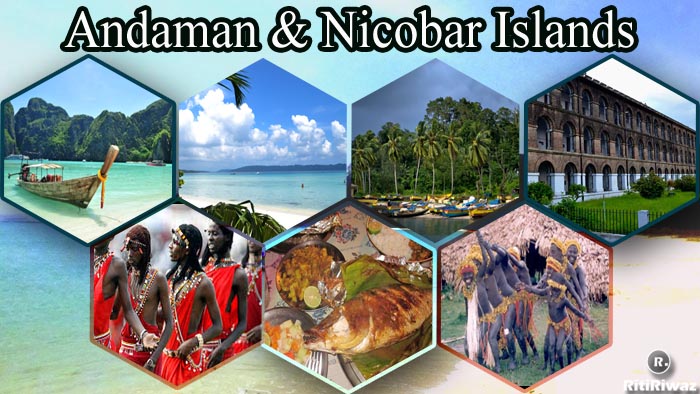
The Andaman Islands are home to four ‘Negrito’ tribes – the Great Andamanese, Onge, Jarawa, and Sentinelese. The Nicobar Islands are home to two ‘Mongoloid’ tribes – the Shompen and Nicobarese. The people of Andaman and Nicobar speak many languages.
Peace prevails all over the Island with no political or communal riots. Not only the beauty of nature and the various enticing features but also the peace-loving people have made the Andaman and Nicobar Islands a tourist spot for visitors overseas.
The people are given quality education. Quality medical facilities are available. The people are very much aware of their rights and concessions and so they abide by and maintain their standards. People enjoy a lot of freedom. They do not have any limitations. They live in harmony. This is a rare sight that one finds in India, which is unusual as there are constraints, political and communal riots, and calm situations in the other parts of India.
The people who dwell here are descendants of the prisoners put in from other parts of India, the refugees who settled down from countries like Bangladesh, Burma, and Srilanka and government officials, and army personnel.
Suggested Read: Culture and Tradition of Indian States
Festivals

Subhash Mela and Island Tourism Festival in January, Beach Festival in April, Monsoon festival in August, Food festival and world tourism day celebration in September, and film festival in November are some of the visible festivals that are celebrated here.
The people of these Islands celebrate special occasions like Durga Puja, Dipawali, Christmas, Janmashtami, and the colorful Holi festival. Even Onam and Pongal are celebrated with equal enthusiasm.
Cuisines
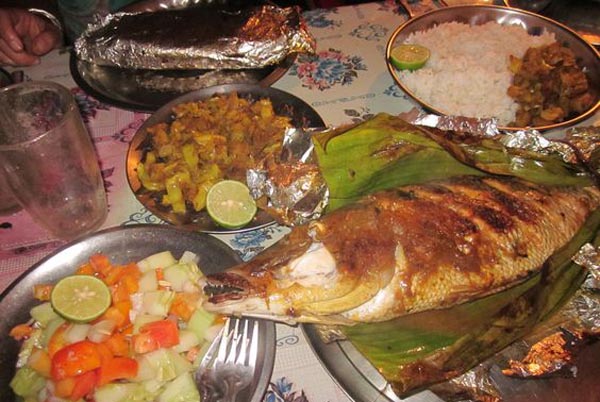
Andaman & Nicobar Islands is a melting pot of Indian Culture. Andaman cuisine is heavily influenced by all the cultures that came into contact with the region. Like many other aspects of Andaman culture, the influence of the Hindu, Christian, Muslim, and Sikh religions on traditional food is very strong. You can observe this deep impact on the truly tasty and spicy cuisine of The Andamans.
The Andaman and Nicobar Island food is basically Non-vegetarian, it is completely a coastal region fish is eaten with rice. Vegetables and most of the food items are imported from other states and the nearest countries.
Suggested Read: Famous Food Of Indian States
Dressing
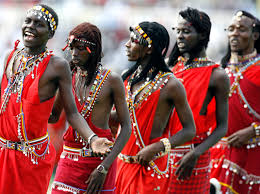
Every region has its own dressing sense and style, but in Andaman & Nicobar Islands tribes people hardly cover their bodies and the people are too much away from the touch of modernity. Till now there are people of Andaman & Nicobar Islands who don’t wear any dress they wear aprons, bark apparel or leaves dress.
The men go all naked; only a long, narrow piece of cloth or sash, which, going round their waists, and thence down between their thighs, is brought up behind and tucked in at that part which goes about the waist. The women have a petticoat from the navel to the knee, and their hair is closely shaved, but the men have their hair left on the upper part of the head and below the crown.
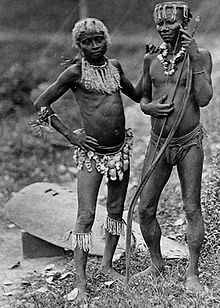

Only recently you can see some people start with clothing. Sea-shell ornaments and leaves dress to make simply amazing clothing.
Suggested Read: Traditional Dresses Of Indian States
Handicraft
Andaman and Nicobar Islands handicrafts industry is mainly dependent upon its shell crafts. Shells of the Andaman and Nicobar Islands are one of the most beautiful and fascinating objects found here. They are some unique creatures of these islands, which are the assets of these islands.
The shell-crafted items of the Andaman and Nicobar Islands handicraft industry enjoy high demand worldwide. The abundance of small and big shells in the coastal areas has tempted the coastal people to indulge themselves in the practice of shell crafting.
Trancs, tortoise, and turbos are the main types of shells. However, there are certain areas of this sector banned by the government in order to avoid the exploitation of natural resources. Timber and woodwork also form an important sector in the handicraft industry. Padauk, Badam, and Gurjan are the main varieties of useful timbers. Handicrafts from coconut shells are also very popular.
Music
In the Andaman group of islands, music is more prominent and important. The Andamanese are highly fond of their own music. They give more importance to the originality of their music and they don’t pay attention to other styles.
Even among the different tribes of Andaman, the rhythm and styles differ drastically. Onge tribes developed all the songs. They sing generally to accompany a dance. Both males and females participate in singing.
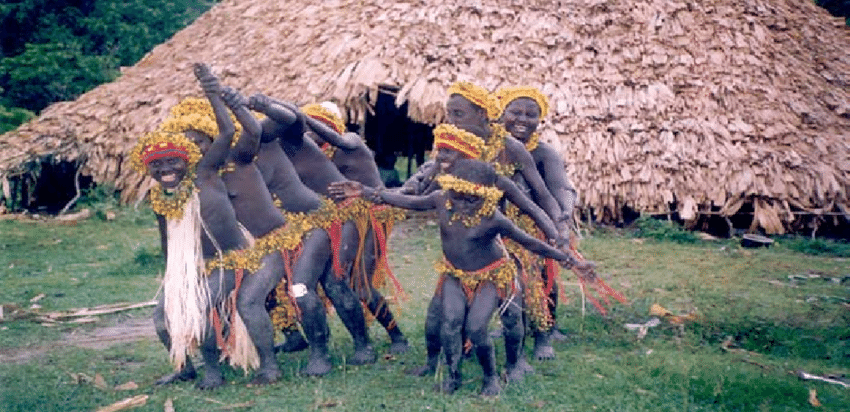
Dance
Nicobari dance is one the most important and oldest traditional dances danced during the Ossuary Feast of Andaman & Nicobar. It is practiced by the Nicobari tribe, who live on the Car Nicobar Island. That is more commonly known as the Pig Festival.
This dance is a way of showing one’s respect to the departed head of the family. It is generally performed during the full moon, under the swinging palm trees. The dancers wearing coconut leaves, sway to the rhythm of traditional songs sung by the leader.
There are many other dance forms in Andaman and Nicobar. Some folk dances can also be seen during the Island Tourism festival which puts on display, the full range of cultural activities.
Tourism

The one thing that takes Andaman and Nicobar well known on the list of tourist destinations in India is the adventure possibilities present here. The varied tourist spots in the tranquil islands of Andaman and Nicobar are so spectacular that people from all over the globe gather at least once to witness their charm and grandeur.
The seas surrounding these islands are absolutely perfect to indulge in sports like Scuba Diving and snorkeling. The lagoons are full of diverse species of fishes and live coral that makes an adventure in these waters a real treat. And there could not be a better place than the hills of Andaman and Nicobar Islands for a trekking experience that is heart-pumping and tranquil at the same moment.
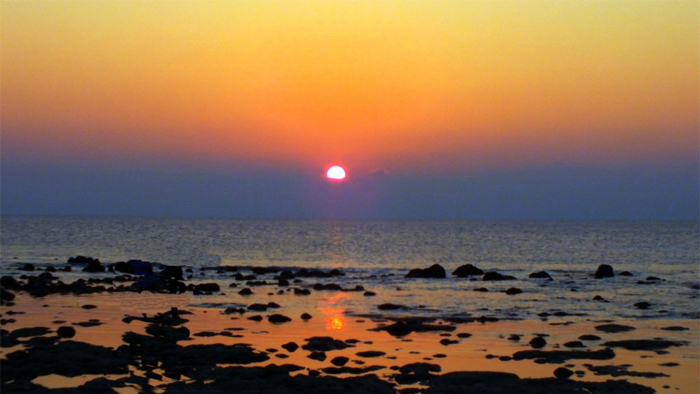
The most important monuments of the islands include Cellular Jail, Viper Island, and Ross Island and it is also famous for its beautiful temples. Some of the famous temples are Sri Vetrimalai Murugan, The Rajasthan temple, and the Sri Shirdi sai baba temple.
Andaman and Nicobar Island has a number of museums like the Anthropological Museum, National Memorial, Fisheries Museum, Samudrika, Forest Museum, and Zoological Survey of India Museum.
The Campbell Bay National Park, Galathea National Park, Mahatma Gandhi Marine National Park, Middle Button Island National Park, Mount Harriet National Park, North Button Island National Park, Rani Jhansi Marine National Park, Saddle Peak National Park, South Button Island National Park are the national parks of this territory.
Andaman and Nicobar Island have plenty of such tourist locations. Each location speaks in volume almost its uniqueness. The pride of India lies in every tourist spot.






